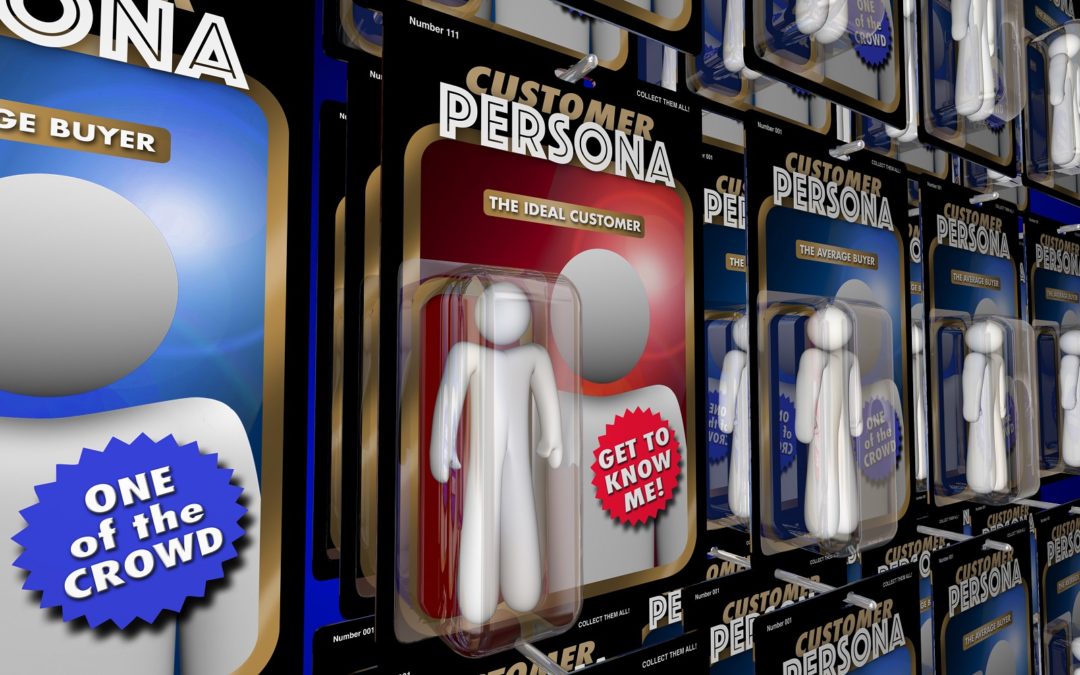Statistics in Persona Creation
What’s commonly meant by ‘persona’ is a deep understanding of users gleaned through the interview process. They include details like demographics, firmographics, desired outcomes, pains, goals, and the like. But personas usually aren’t helpful to understand users in the context of their contribution to ROI.
You can’t segment personas created qualitatively. You only know your users’ attributes, but not how common those attributes are.
This is where statistical validation comes in. You can test your personas in a survey, to see what percent of your users fit into each persona, and how much each contributes to revenue. This is useful to understand the market size of each persona.
Since your iterating, 100-150 research participants will do when testing personas quantitatively. And you can do so monthly or quarterly.
The Right Customers to Research
If your goal is to find your most valuable customers, or increase retention, research your own customers. Those who are both satisfied and unhappy.
If you are innovating a new product, interview your own customers who either just started or stopped using your product. Apply an outcome-driven and unmet-needs-driven analysis to uncover why customers switch from your solution to another (or from another solution to yours).
To study a new market, your trial users who just signed up are a great place to start. What are they looking for in a new SaaS? Discover their pain points with their current solutions that they hope yours will fix.
Another way to study a new market is to question consumers outside your company database.
Is Your User also the Buyer?
Understanding users vs. buyers is a key to building nuanced personas. For some software/SaaS, the user and buyer are one and the same, while for others, the user never buys.
The average B2B buying cycle includes multiple decision-makers (3-10 or more). The user is mixed up somewhere in that process, and it’s important to understand their connection to purchase when building personas.
A few examples of decision-maker roles: researching solutions, whittling down the final choices, rallying colleagues around the top choice, acting as a devil’s advocate to shut down the purchase, signing off on the deal, making the payment, etc.



Monetize Your Personas
Let personas help you discover which products and features are linked to greater customer value.
In this approach, each persona attribute (e.g. demographics, needs, pain points, etc.) is validated in a quant survey, which also includes revenue-related questions that are linked back to each validated persona. For example:
- What price are they willing to pay based on which features?
- Which of your SaaS attributes lead to strong customer satisfaction (high lifetime value)?
- What is the personas’ estimated customer acquisition cost (CAC)?
- What is a persona’s purchase power…can they buy independently, do they need approval, or does their boss buy?
Pain Points of Purchase
Find out through in-depth interviews, what problems are users trying to solve, and what outcomes are they ultimately searching for? From here, you can build creatively to the features that will truly resonate.
What do users want, but for which they just can’t “get no satisfaction?” Link these unmet needs to the features you’re developing.
Time and again, high growth companies have proven through their focus on unmet customer needs, that these unmet needs are the intel needed to build a product that not only lasts, but disrupts.
Not just Features, but Outcomes
Sure, you want to uncover each persona’s favorite features, and the features they just can’t stand. Also find out:
- What outcomes beyond the software itself they are trying to accomplish?
- What are they trying to do in the bigger picture of their lives (or workday) when they use your solution?
With outcome-based intel, you’ll not only refine what you’re building, but also innovate features that clearly differentiate from your competitors.
Don’t Forget Motivations
You know that the product you are developing, however technical, appeals to your users for personal reasons. Find out what those reasons are when creating user personas.
- Will they learn the SaaS quickly?
- Will it help them do things more quickly?
- Will it make their job easier?
- Will the purchase be seen as improved performance by the boss?
Psychology Affects Purchase
If your user is also the buyer, tap into these attributes when developing personas:
- Logical yet fast buying: competitive buyers, want high performance. Competitive advantage is the impetus for their decisions.
- Buyers that are methodical are slow and logical, believing that the right choice comes only after a thorough review of information.
- Emotional and fast, spontaneous buyers are motivated by the excitement that only a quick purchase can bring.
- Humanistic buyers buy emotionally yet slowly. They take the time to understand the company and the people they are buying from.
Though you would expect B2B buying to be logical and slow, this is only sometimes the case.
For example, a school administrator buys eLearning software because she logically thinks it’s useful. But more than that, her heart is touched when she thinks of the children who could be lifted out of poverty through this software.
It is this emotionally-driven thought that pushes her to make the purchase.
Entrepreneurs or small businesses by virtue of size have a quicker, simpler buying process, where only 1-2 people are the decision-makers. So personal style prevails, including a higher rate of quick, emotional buys.
How about you?
Would you love to see your user personas refresh the game in {{company}}’s product development and innovation?
Truify.co can guide you through your DIY research process, whether it be agile or custom. We partner with you to create a fresh, relevant analysis of your users to increase your organic success in the market.
Or we can take over the research process for you end to end. We have either custom and agile capabilities, depending on your questions.
We hope you enjoyed this blog and can get some use from it!
References
priceintelligently.com/blog/everyone-in-saas-is-using-buyer-personas-incorrectly
neilpatel.com/blog/minds-of-saas-customers/
cxl.com/blog/creating-customer-personas-using-data-driven-research/
victoreduoh.com/saas-customer-persona
divami.com/blog/importance-of-persona-based-design
cxl.com/blog/creating-customer-personas-using-data-driven-research
nngroup.com/articles/persona-types/

